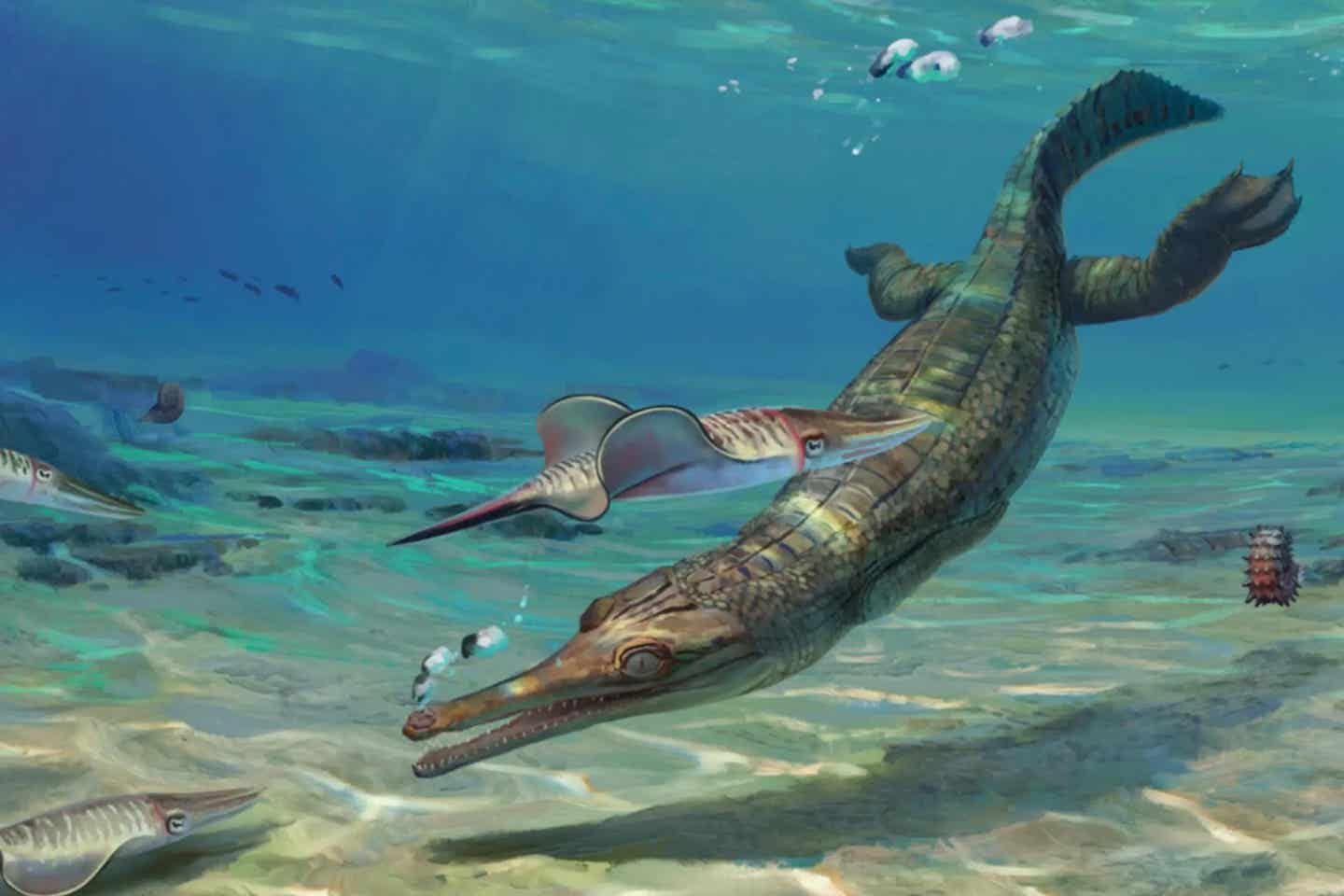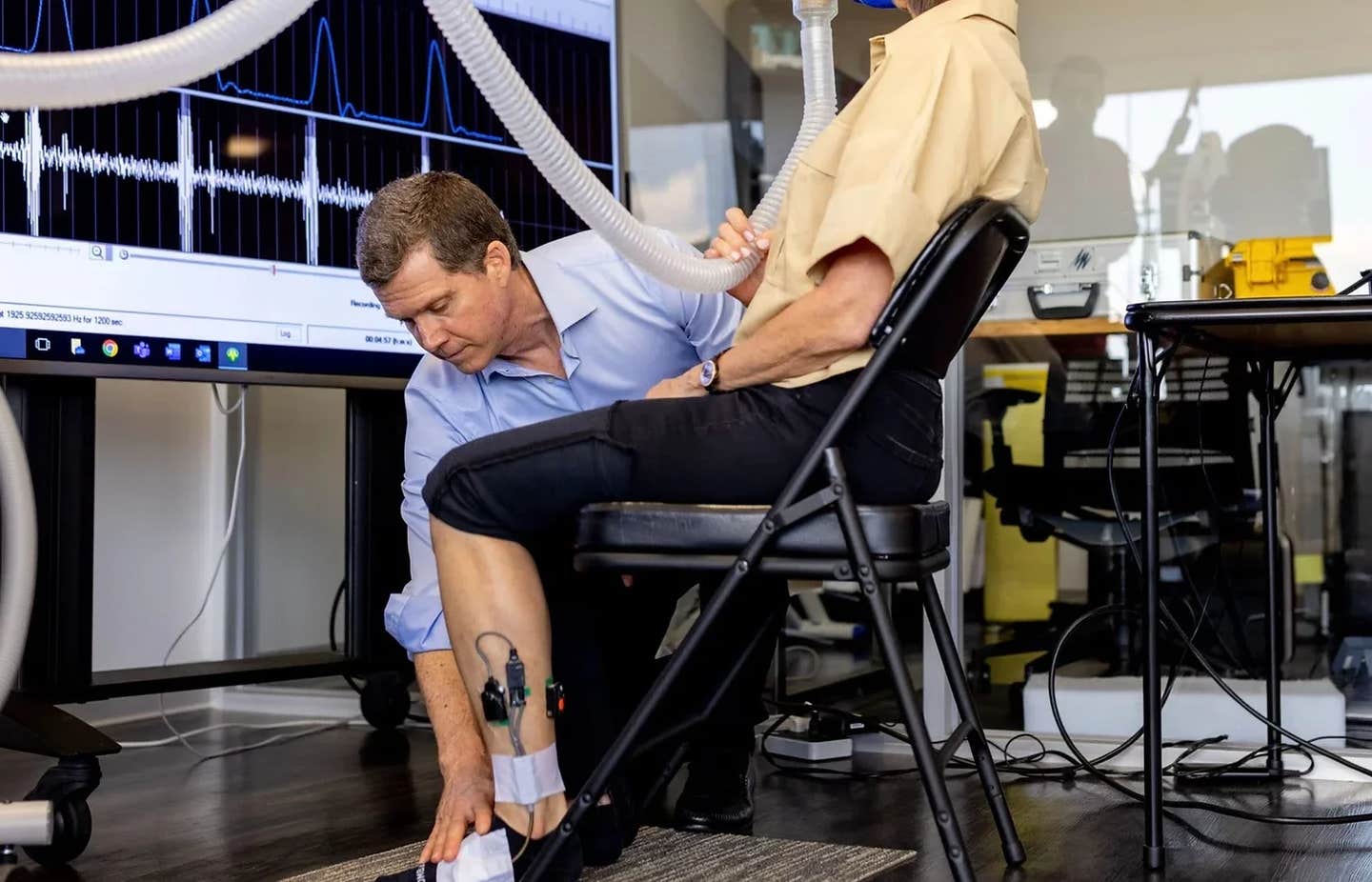Scientists discover new species of ancient crocodile – from 135 million years ago
Researchers have discovered a new species of ancient marine crocodile, Enalioetes schroederi, which lived in the shallow seas of Germany

Ancient Crocodile (CREDIT: New York Post)
In a remarkable discovery, researchers from Germany and the UK have unveiled a new species of ancient marine crocodile, Enalioetes schroederi. This prehistoric creature thrived in the shallow seas that once covered much of Germany during the Cretaceous Period, around 135 million years ago.
Enalioetes was part of the Metriorhynchidae family, a group of crocodiles that had evolved a body plan similar to dolphins. These adaptations included smooth, scaleless skin, flippers, and a tailfin, enabling them to navigate the marine environment with ease.
The diet of metriorhynchids was diverse, consisting of fast-moving prey like squids and fish, and in some species, large, serrated teeth suggested a diet that included other marine reptiles. While metriorhynchids are more commonly associated with the Jurassic Period, their fossils become increasingly rare in the Cretaceous, making the discovery of Enalioetes schroederi particularly significant.
What sets this discovery apart is the exceptional preservation of the Enalioetes skull, which is the best-preserved metriorhynchid specimen from the Cretaceous. This three-dimensional skull has provided invaluable insights into the anatomy of these ancient marine crocodiles.
Sven Sachs, the project leader from the Naturkunde-Museum Bielefeld, emphasized the importance of this find, stating, “The specimen is remarkable as it is one of very few metriorhynchids that is known by a three-dimensionally preserved skull. This allowed us to CT scan the specimen and so we were able to learn a lot about the internal anatomy of these marine crocodiles. The remarkable preservation allowed us to reconstruct the internal cavities and even the inner ears of the animal.”
Dr. Mark Young from the University of Edinburgh’s School of GeoSciences added, “Enalioetes gives us fresh insight into how metriorhynchids were evolving during the Cretaceous Period. During the Jurassic, metriorhynchids evolved a body plan radically different from other crocodiles - flippers, tailfin, loss of bony armor, and smooth scaleless skin. These changes were adaptations to an increasingly marine lifestyle.
Related Stories
Enalioetes shows us that this trend continued into the Cretaceous, as it had even larger eyes than other metriorhynchids (which were already big by crocodylian standards) and the bony inner ears were even more compact than other metriorhynchids, a sign that Enalioetes was probably a faster swimmer.”
The history of this specimen is as fascinating as the creature itself. Over a century ago, the perfectly preserved skull and the first neck vertebrae were discovered in a quarry in Sachsenhagen near Hannover by D. Hapke, a German government architect.
Initially, the specimen was handed over to Henry Schroeder of the Prussian Geological Survey in Berlin for preparation and study. However, it was believed to have been lost during World War II after being incorporated into the collection in Berlin.
Contrary to this belief, the specimen was later rediscovered in the Minden Museum in Western Germany. It turned out that the specimen had been returned to the original finder, whose family relocated to Minden after the war and brought the specimen with them. Today, this crocodile is one of the most valuable specimens in the Minden collection.
Named in honor of Henry Schroeder, who provided the initial description, Enalioetes schroederi represents a significant addition to our understanding of metriorhynchids. By comparing this fossil with others from museum collections, Sachs and his team determined that it was indeed a species new to science.
The discovery of Enalioetes schroederi not only sheds light on the continued evolution of metriorhynchids during the Cretaceous but also highlights the importance of preserving and studying fossils, even those thought to be lost. As researchers continue to unearth and examine these ancient creatures, each new find adds a piece to the puzzle of Earth’s distant past, offering a clearer picture of the life that once thrived in the prehistoric seas.
Note: Materials provided above by The Brighter Side of News. Content may be edited for style and length.
Like these kind of feel good stories? Get The Brighter Side of News' newsletter.
Joshua Shavit
Science & Technology Writer | AI and Robotics Reporter
Joshua Shavit is a Los Angeles-based science and technology writer with a passion for exploring the breakthroughs shaping the future. As a contributor to The Brighter Side of News, he focuses on positive and transformative advancements in AI, technology, physics, engineering, robotics and space science. Joshua is currently working towards a Bachelor of Science in Business Administration at the University of California, Berkeley. He combines his academic background with a talent for storytelling, making complex scientific discoveries engaging and accessible. His work highlights the innovators behind the ideas, bringing readers closer to the people driving progress.



